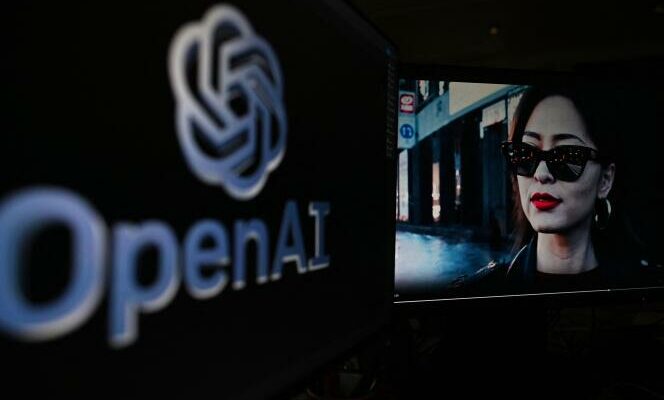A woman walking in the streets of Tokyo in the light of neon lights, a bird’s eye view of a lighthouse in the middle of the cliffs, a crab fighting an octopus: these videos are credible to the point that we can take them for real. However, they are produced without a camera, by typing a simple textual instruction into an artificial intelligence (AI) called Sora, revealed February 15 by ChatGPT’s publisher, OpenAI.
As compelling as they are, these images should be viewed with caution: the media and general public have not yet been able to test Sora. Little is known about the conditions under which these example videos were produced. For example, we know nothing about the proportion of failed sequences, or the number of trials containing visual oddities that are common with this type of tool, such as a two-legged horse or a three-legged man.
Also, Sora is not the very first video generation tool of its kind. Meta unveiled Make-A-Video in 2022, the same year as Google’s Imagen, which now has a successor named Lumiere. From 2023, commercial tools have appeared such as RunWay ML, Pika or Kaiber. So many AIs with disappointing results, according to an overview conducted by The world in June 2023.
Less static
Sora’s videos seem better in more ways than one: more detailed, more realistic, longer too. According to OpenAI, they can last up to a minute when many competitors limit their sequences to a few seconds. Above all, Sora’s videos are much less static than those to which the AI has accustomed us, too often limited to more or less animated 2D views.
In comparison, Sora’s demonstration sequences are inhabited by beautiful camera movements, sometimes carried on the shoulder, sometimes mounted on a drone, or even moved on a rail with the geometric stiffness of a video game. These beautiful cinematic qualities will not fail to question video professionals: from which image bases did OpenAI draw these videos to train Sora’s artificial neurons? In his research reportthe American company remains evasive on this topic. She declares At New York Times use royalty-free videos as well as copyrighted images.
It is unclear when Sora will be open to the general public. Access to the new OpenAI tool is currently reserved for hand-picked image professionals, as well as researchers who use it.help lock AI against malicious uses – in particular against the production of violent content, pornographic images, or disinformation campaigns.
You have 40.03% of this article left to read. The rest is reserved for subscribers.
